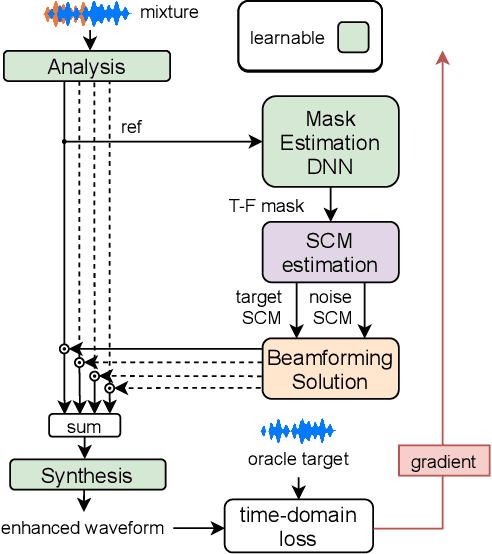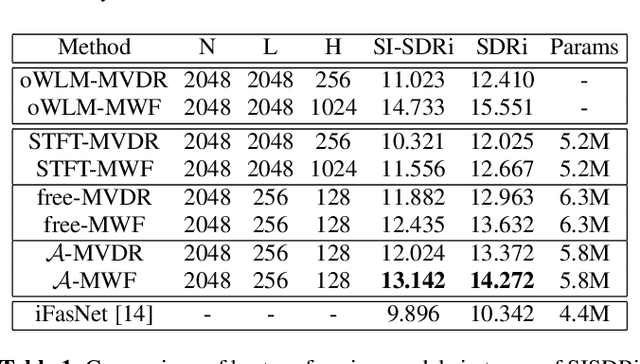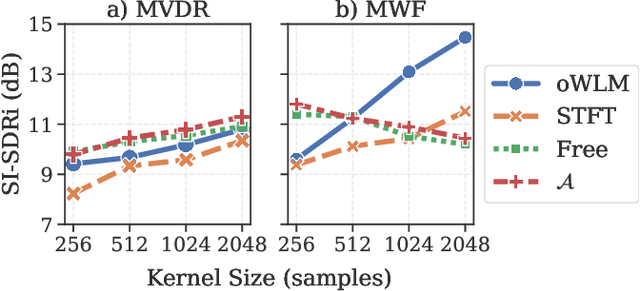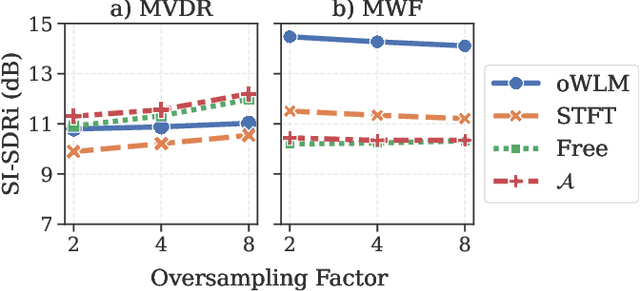Learning Filterbanks for End-to-End Acoustic Beamforming
Paper and Code
Nov 08, 2021



Recent work on monaural source separation has shown that performance can be increased by using fully learned filterbanks with short windows. On the other hand it is widely known that, for conventional beamforming techniques, performance increases with long analysis windows. This applies also to most hybrid neural beamforming methods which rely on a deep neural network (DNN) to estimate the spatial covariance matrices. In this work we try to bridge the gap between these two worlds and explore fully end-to-end hybrid neural beamforming in which, instead of using the Short-Time-Fourier Transform, also the analysis and synthesis filterbanks are learnt jointly with the DNN. In detail, we explore two different types of learned filterbanks: fully learned and analytic. We perform a detailed analysis using the recent Clarity Challenge data and show that by using learnt filterbanks is possible to surpass oracle-mask based beamforming for short windows.
 Add to Chrome
Add to Chrome Add to Firefox
Add to Firefox Add to Edge
Add to Edge